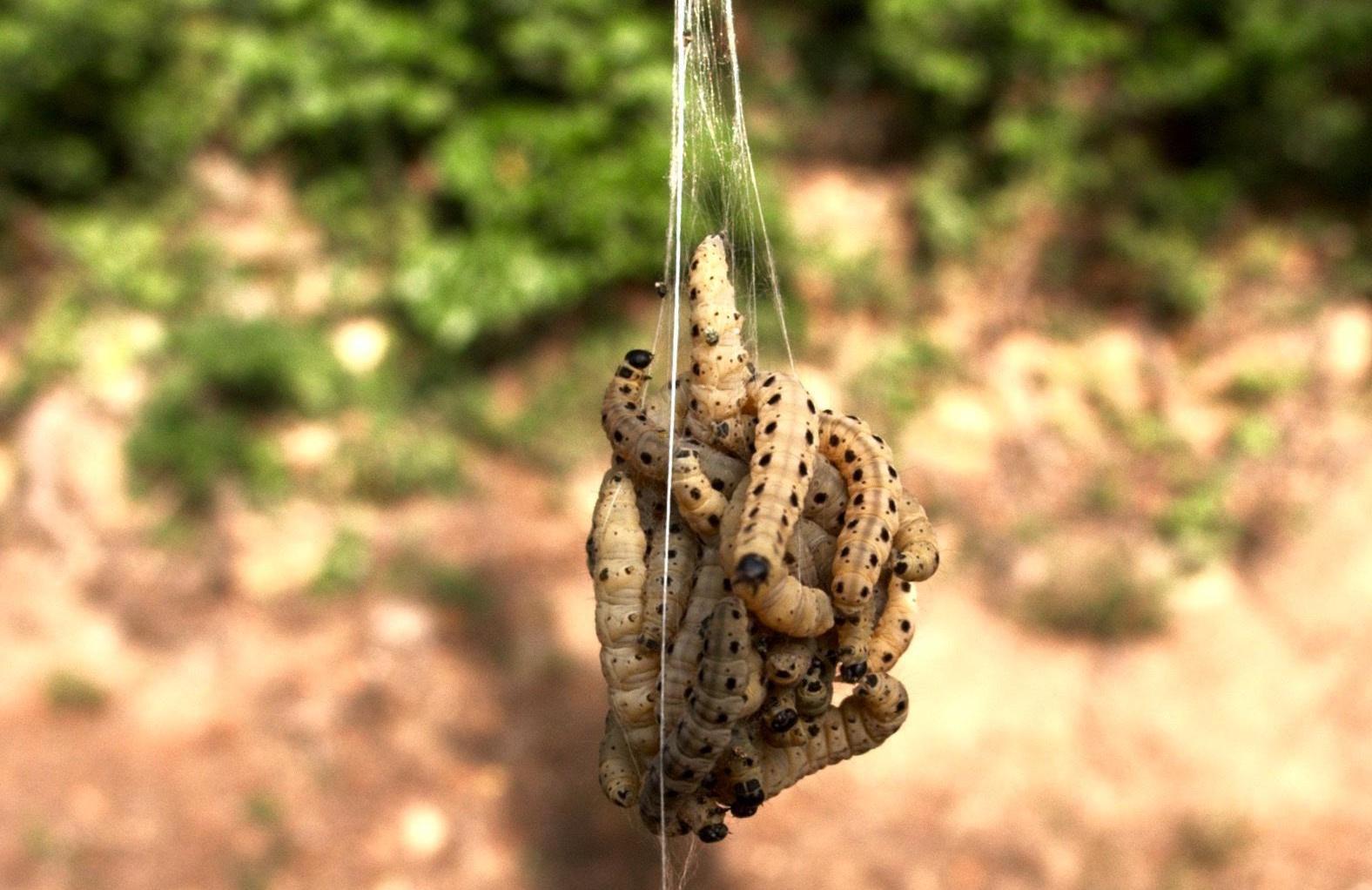In Berlin, when you a see a tree covered in small worms, they are probably ermine moth worms (Gespinstmottenraupen) or oak processionary worms (Eichenprozessionsspinner).
Summary: If the worms have hair on their backs, don't touch them. They are dangerous.
Oak processionary worms
Oak processionary larvae (Eichenprozessionsspinner). You can find them in from May to July1. They live in large groups on oak trees, and around them. They often move together in the same direction.
These worms are dangerous to you and your pets1. Do not touch them. The hairs on their backs are toxic. They cause allergic reactions. They cause itchy, blistering skin rashes. The symptoms start after a day, and they can last for a few weeks1, 2. In some cases, they can cause more serious problems like fever, dizziness and breathing problems1.
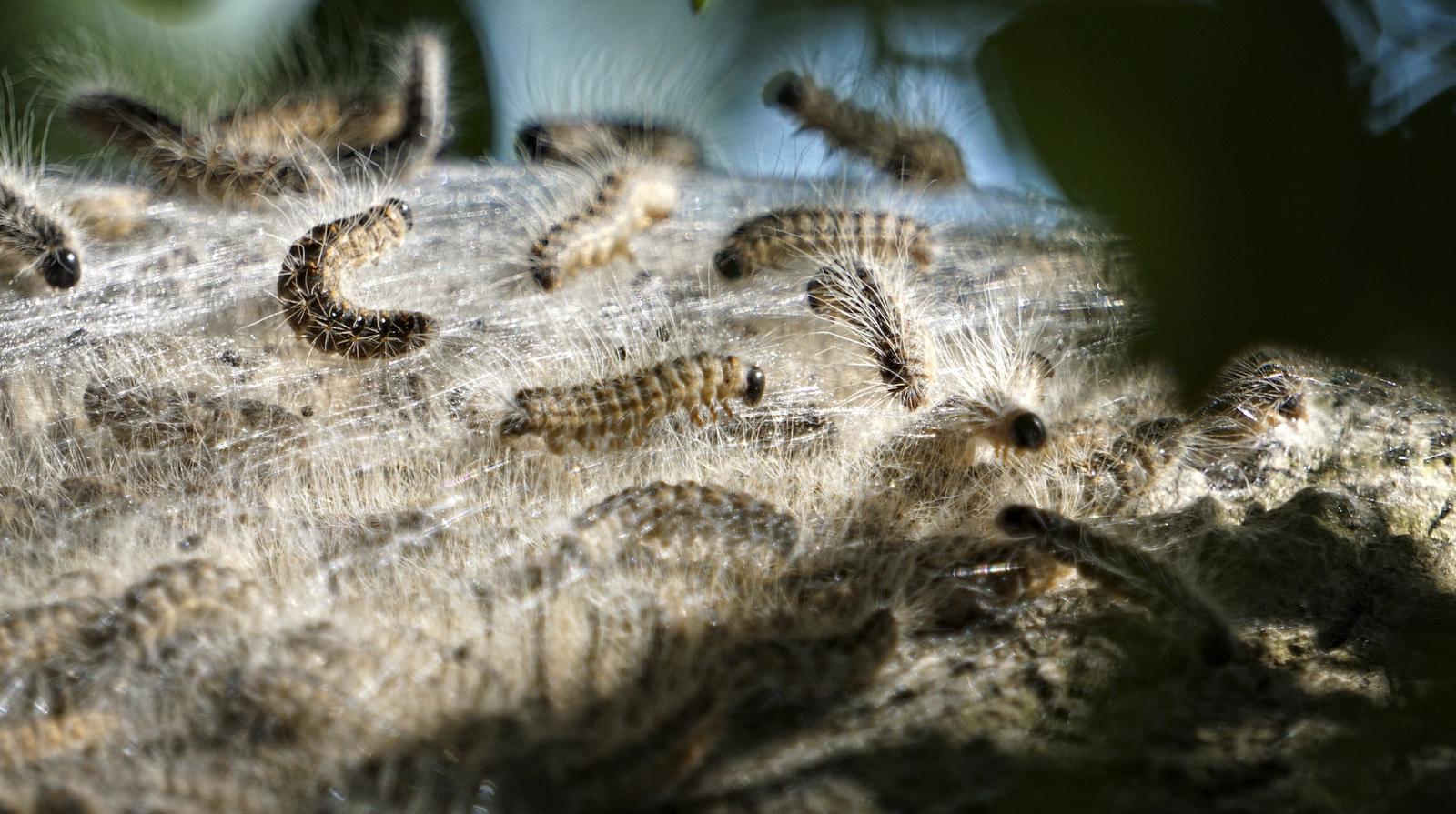
The city sometimes puts warning signs in parks, and even block roads1, 2. They also try to kill them with fire or vacuums1.
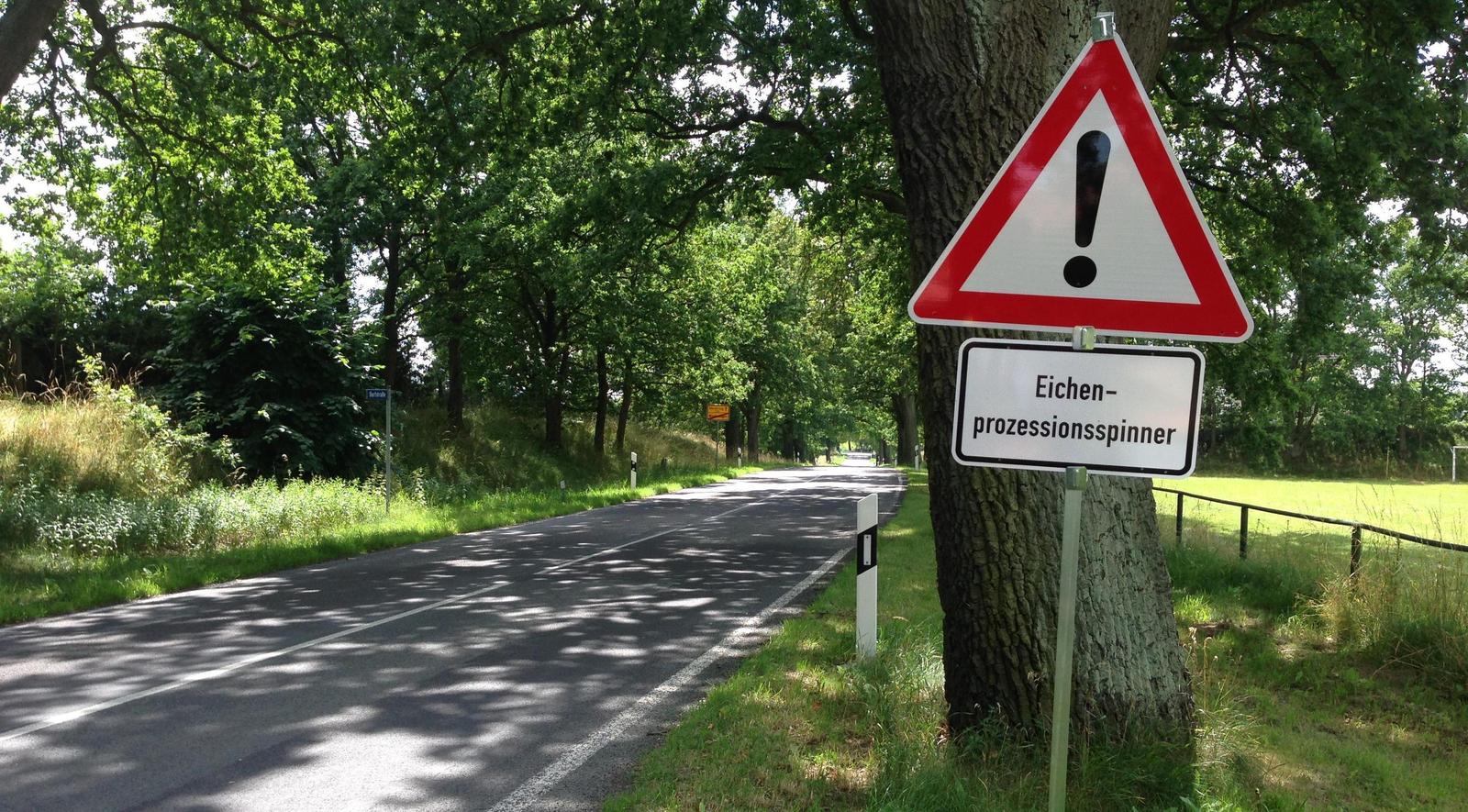

Ermine moth worms
Ermine moth larvae (Gespinstmottenraupen) are around 3 centimetres long. They have smooth skin, and dark dots on their backs. You can find them from April to July1. Just look for trees covered in silk.
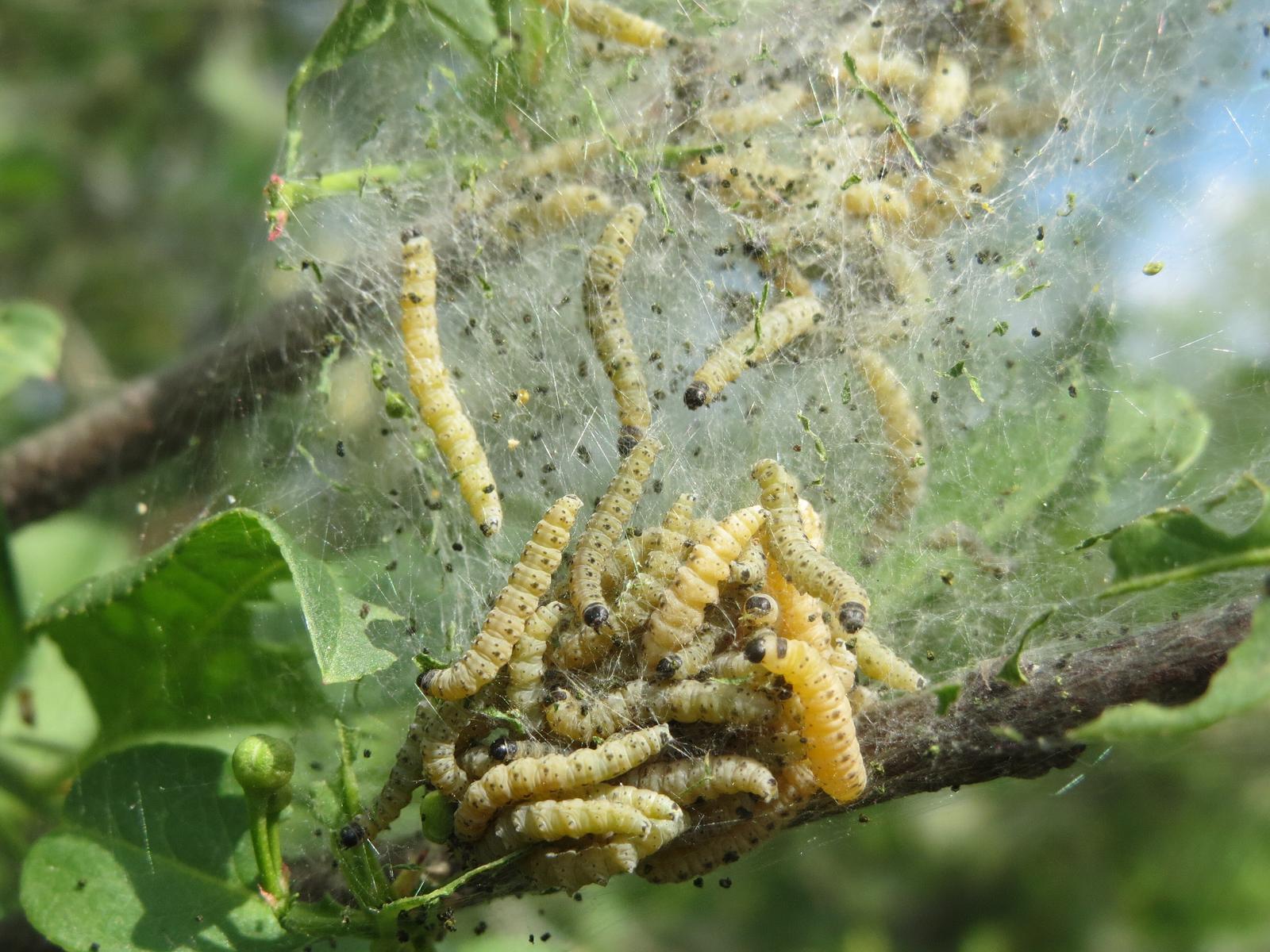
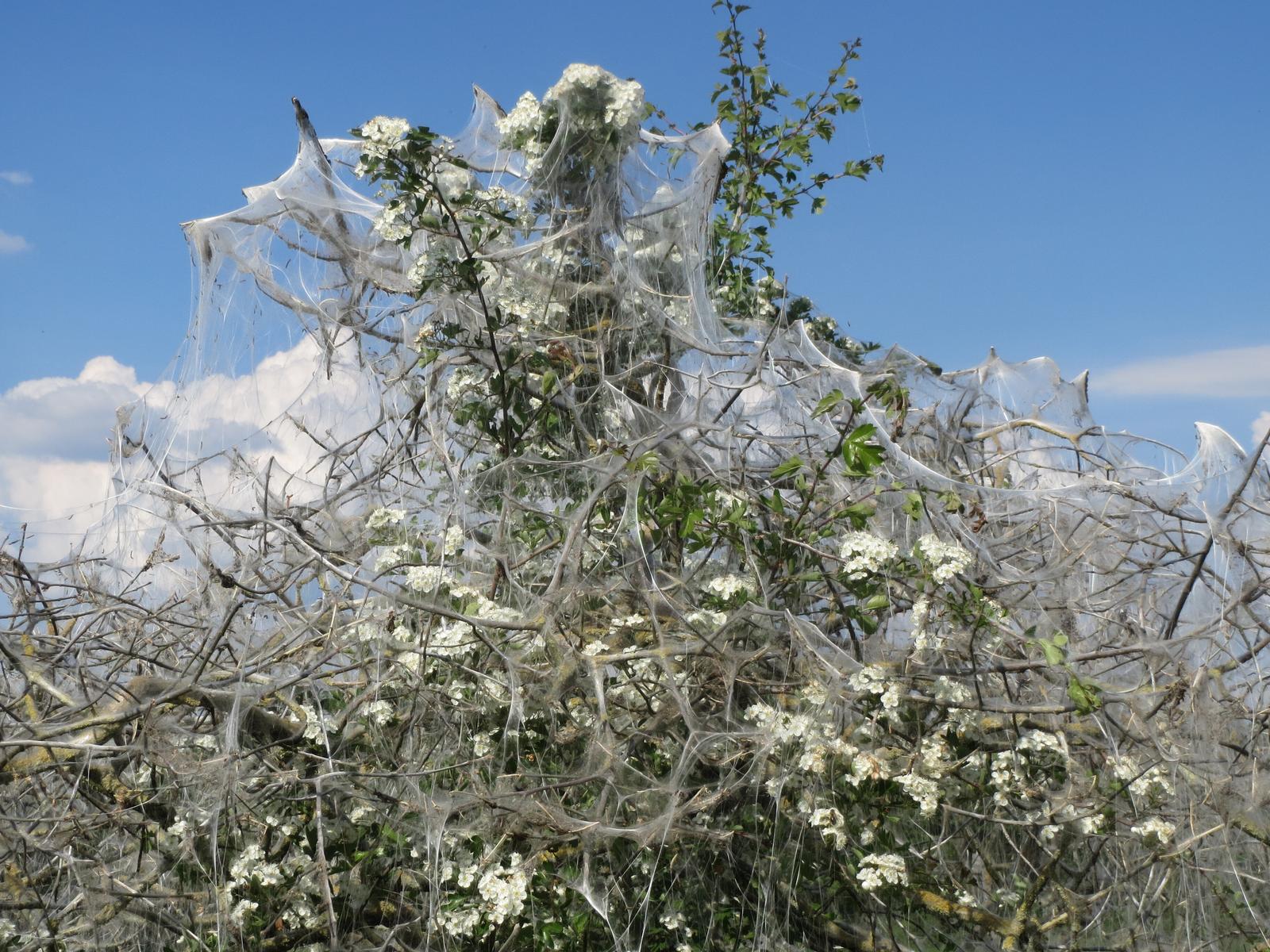
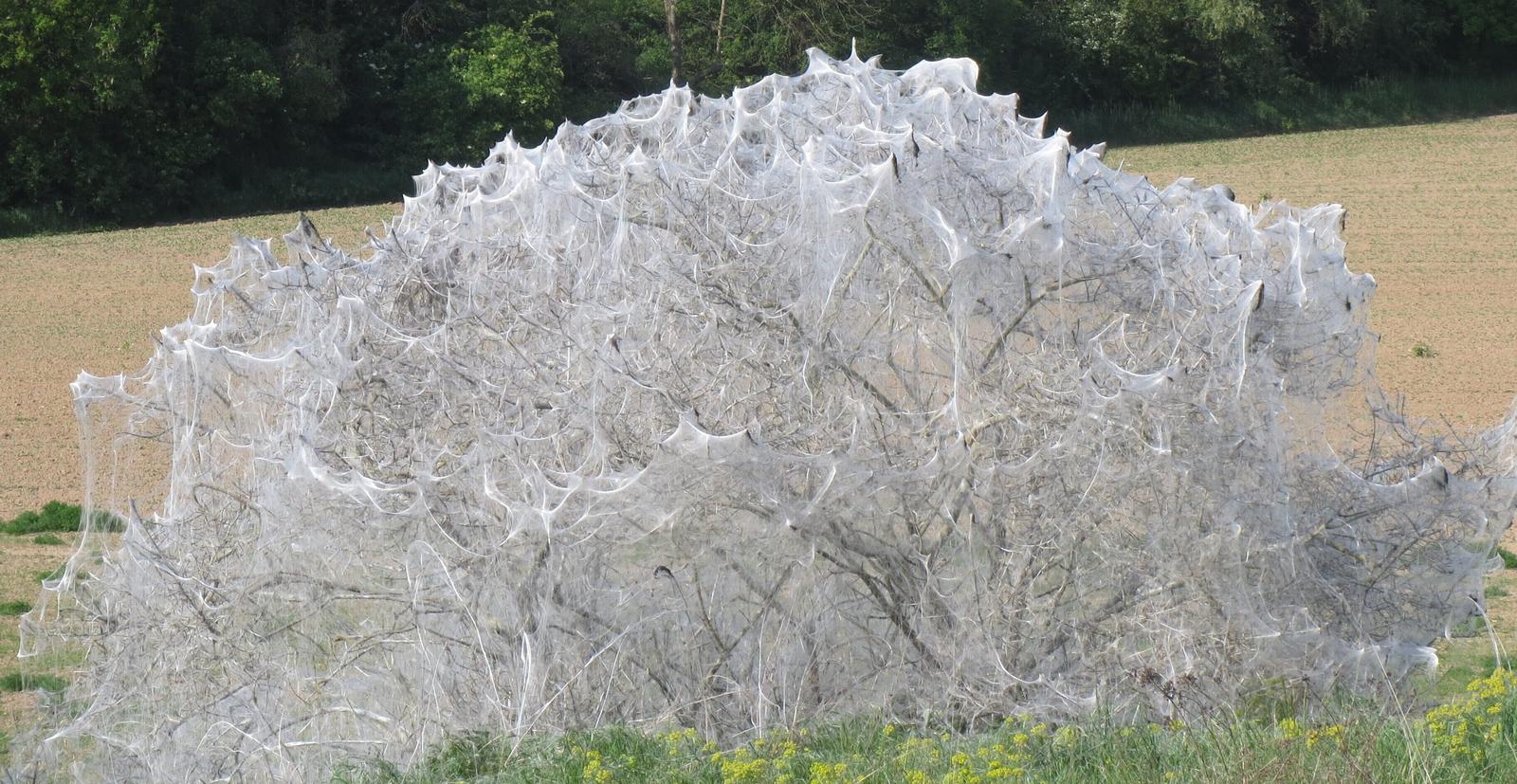
Ermin moth larvae are not dangerous to you or your pets, but they often kill the trees they invade1. They sometimes hang from trees by their silk, so you can run into them.
